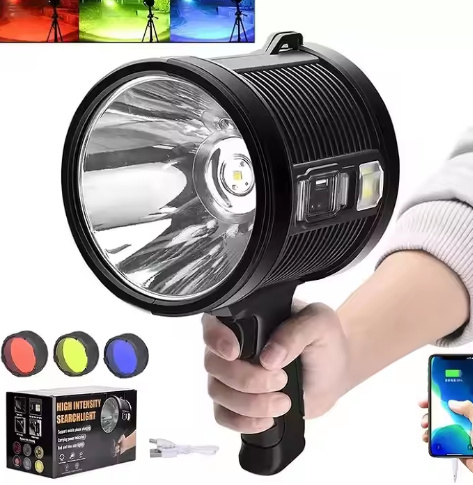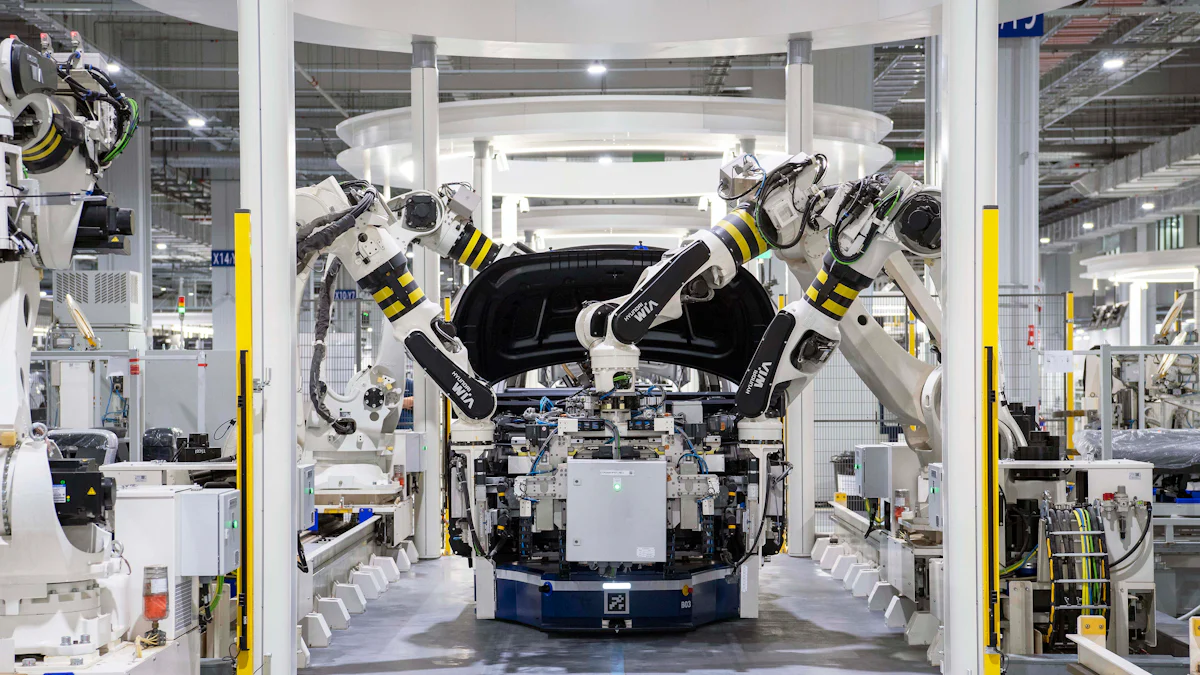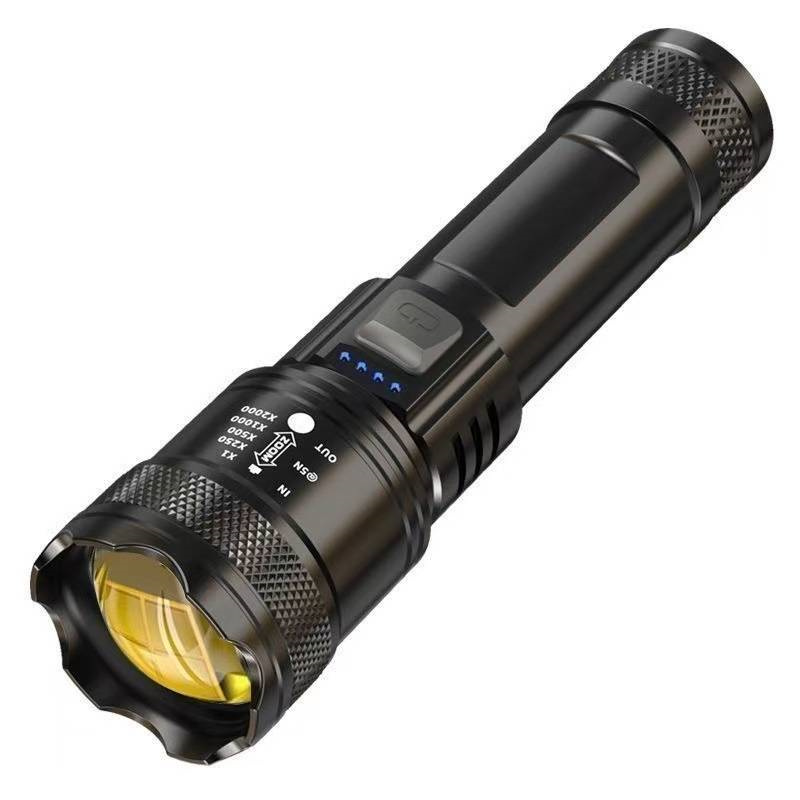How Flashlight Manufacturers Ensure Product Quality During Mass Production

You rely on flashlights to work flawlessly in critical moments, making the quality of these products essential. To achieve this, flashlight manufacturers implement a rigorous quality control process that ensures product quality during mass production. Without such measures, defects could compromise performance and safety. Consistent product quality builds trust and keeps customers satisfied, while also strengthening a brand’s reputation, which is a key factor in long-term success. By focusing on how flashlight manufacturers ensure product quality during mass production, they deliver reliable products to you.
Key Takeaways
Flashlight makers focus on quality checks for safety and reliability. This helps customers trust them and improves their brand image.
Making prototypes and testing them carefully are important steps. These steps find problems early, so flashlights work as expected.
Using strong materials like aluminum and stainless steel makes flashlights last longer. These materials help flashlights survive tough conditions.
Organized assembly lines and checks during production reduce mistakes. This ensures every flashlight works the way it should.
Adding technology like IoT and AI makes quality checks better. These tools watch production in real-time and fix issues early, keeping quality high.
Design and Development in the Torch Manufacturing Process
Prototyping and Testing
Prototyping plays a critical role in the torch manufacturing process. During this phase, manufacturers create initial models to test the design's functionality and identify potential flaws. You might wonder why this step is so important. It ensures that every flashlight meets performance expectations before mass production begins. Manufacturers often face challenges during prototyping, such as aligning components properly or integrating electronic and mechanical parts seamlessly. Skilled technicians address these issues by following a well-organized assembly plan.
Testing is equally vital. Manufacturers conduct rigorous tests to evaluate functionality, durability, and usability. For instance, they check beam patterns, brightness levels, and structural integrity. These tests help identify problems like interference between components or compatibility issues. By resolving these early, manufacturers ensure that the final product performs reliably in real-world conditions.
Standardizing Design Specifications
Standardizing design specifications ensures consistency and quality across all flashlights. Manufacturers adhere to industry standards for light output, battery life, and durability. For example, they inspect bulb alignment with the reflector to optimize beam performance. They also evaluate switch assembly connections and seal battery compartments to prevent moisture damage. These steps guarantee that every flashlight meets strict quality control standards.
In addition to these checks, manufacturers design flashlights to withstand specific environmental conditions. Some models are tested to function in hazardous environments, with temperature ratings ranging from TI (≤ 842°F) to T6 (≤ 185°F). Recognized labs, such as Underwriters Laboratories, conduct these tests to certify safety and reliability. By standardizing these specifications, manufacturers ensure that you receive a high-quality product every time.
Material Selection and Component Manufacturing for Product Quality

Choosing High-Quality Materials
The materials used in flashlight manufacturing directly affect their durability, performance, and reliability. Manufacturers carefully select materials to ensure the casing can withstand various environmental conditions while maintaining functionality. For example, aluminum alloy is a popular choice due to its lightweight nature and excellent heat dissipation, which protects internal components and extends the flashlight's lifespan. Stainless steel, on the other hand, offers superior strength and corrosion resistance, making it ideal for heavy-duty applications.
Here’s a breakdown of commonly used materials and their properties:
Material | Properties | Uses in Flashlight Housing |
|---|---|---|
Acrylonitrile Butadiene Styrene (ABS) | Durability, Chemical resistance | Commonly used in plastic polymer flashlights for safety and heat resistance. |
Aluminum Alloy | Lightweight, Heat conduction | Preferred for high-quality flashlights due to strength and heat dissipation. |
Stainless Steel | Strength, Corrosion resistance | Ideal for heavy-duty applications, ensuring durability and aesthetic appeal. |
Titanium | Exceptional strength-to-weight ratio, Corrosion resistance | Premium choice for specific needs, offering durability without added weight. |
Selecting the right materials ensures that high-quality torches can endure harsh conditions. Aluminum alloy, for instance, enhances structural integrity and improves heat dissipation, making it a reliable option for long-term use.
Precision in Component Manufacturing
Precision in manufacturing ensures that every flashlight component fits perfectly and functions as intended. Manufacturers use advanced techniques like CNC machining to achieve tight tolerances, which reduces wear and tear and enhances product quality. This process guarantees consistency across production runs, ensuring that each flashlight meets the same high standards.
Here are some benefits of precision manufacturing:
Achieving consistency across production runs minimizes quality variance.
Tight tolerances improve the durability and performance of components.
Reducing the need for post-production modifications saves time and costs.
Precision techniques also play a crucial role in creating durable casings. For example, CNC machining allows manufacturers to craft aluminum or titanium casings with exact dimensions, ensuring a snug fit for internal components. This level of accuracy is essential for producing waterproof and shockproof flashlights that can perform reliably in extreme conditions.
By combining high-quality materials with precision manufacturing, flashlight manufacturers ensure product quality during mass production. This approach not only enhances the durability of the casing but also guarantees that you receive a reliable product every time.
Assembly Process and Quality Control
Streamlined Assembly Lines
The assembly process in the manufacture of torches relies on streamlined assembly lines to maintain efficiency and ensure consistent quality. Each step in the torch manufacturing process is carefully planned to minimize errors and maximize productivity. Manufacturers begin by sourcing high-quality raw materials, such as metals and plastics, to ensure the durability of the final product. Skilled technicians then craft the flashlight body using precision cutting and shaping techniques. This step ensures that the casing is both durable and functional.
Once the body is ready, the assembly of electronic components begins. Technicians secure electrical connections to guarantee proper functionality. They then install the reflector and lens, ensuring precise alignment for optimal light output. Proper alignment is critical because even a slight misalignment can affect the flashlight's performance. Finally, rigorous testing ensures that each flashlight meets the required specifications. These tests evaluate beam patterns, brightness, and durability, ensuring the product is ready for real-world use.
Tip: Streamlined assembly lines not only improve efficiency but also help maintain consistent quality during mass production.
In-Process Quality Checks
In-process quality checks play a vital role in ensuring that every flashlight meets high standards before it reaches you. Manufacturers perform multiple checks during the assembly process to identify and address issues early. For example, they inspect the alignment of the bulb with the reflector to ensure proper performance. They also evaluate the switch assembly to confirm secure electrical contact. Additionally, they check the battery compartment seal to prevent moisture from entering while allowing gas venting.
These checks are not limited to individual components. Manufacturers also test the assembled flashlight for overall functionality. This includes verifying that the beam pattern is uniform and that the brightness level meets design specifications. By conducting these checks during assembly, manufacturers can catch and fix problems before the product moves to the next stage.
Note: In-process quality checks reduce the risk of defects, ensuring that you receive a reliable flashlight every time.
By combining streamlined assembly lines with thorough in-process quality checks, flashlight manufacturers ensure product quality during mass production. This approach guarantees that the final product performs reliably and meets your expectations.
Quality Control Process in Flashlight Manufacturing
Functional Testing
Functional testing ensures that every flashlight performs reliably under real-world conditions. Manufacturers use a detailed quality control checklist to evaluate key components. For example, they check the alignment of the bulb with the reflector to optimize light output. They also test the switch assembly to confirm proper contact with electrical leads. Additionally, they inspect the battery compartment seal to prevent moisture entry while allowing gas venting during operation. These tests help identify manufacturing quality defects early, ensuring that defective products do not reach you.
Here’s a quick overview of common functional tests and their purposes:
Test Description | Purpose |
|---|---|
Bulb Alignment | Ensures proper performance by checking alignment with the reflector. |
Switch Assembly | Evaluates contact with electrical leads for proper functionality. |
Battery Compartment Seal | Checks for moisture prevention while allowing gas venting during use. |
By conducting these tests, manufacturers maintain high product quality and reduce the risk of quality issues during mass production.
Visual Inspections
Visual inspections play a vital role in identifying quality defects during the torch manufacturing process. At every stage of production, technicians examine components for scratches, pinholes, and foreign particles. They also verify that all parts are correctly positioned and shaped. For example, they ensure that the reflector and lens are free from defects and properly aligned. This step is essential for maintaining quality standards and preventing quality issues from escalating.
During on-site product inspection, manufacturers use a quality inspection checklist to ensure consistency. This checklist includes specific inspection criteria, such as verifying the smoothness of the flashlight casing and confirming the absence of visible flaws. By addressing quality defects early, manufacturers improve overall product quality and reduce the likelihood of defective products reaching you.
Batch Sampling
Batch sampling is a critical part of the quality management system in flashlight manufacturing. Instead of inspecting every unit, manufacturers select random samples from each production batch. These samples undergo rigorous testing and inspection to identify potential manufacturing quality defects. For instance, technicians use a quality control checklist to evaluate beam patterns, brightness levels, and structural integrity.
This method allows manufacturers to track quality defect trends and address recurring issues. If a sampled flashlight fails to meet quality standards, the entire batch may undergo further inspection or rework. Batch sampling ensures that the quality control process remains efficient while maintaining high-quality standards. It also helps manufacturers identify and resolve quality issues before they affect a larger number of products.
By combining functional testing, visual inspections, and batch sampling, flashlight manufacturers ensure product quality during mass production. These steps form the backbone of a robust quality management system, delivering reliable flashlights that meet your expectations.
Technology and Automation in Ensuring Product Quality

Role of IoT and AI
Technology plays a significant role in improving quality control during flashlight manufacturing. IoT (Internet of Things) enables real-time monitoring of production processes. Sensors collect data from machines and components, allowing manufacturers to detect issues as they arise. This proactive approach prevents defects before they occur, ensuring consistent product quality. For example, IoT systems can monitor temperature and pressure during assembly, ensuring that each flashlight meets design specifications.
AI (Artificial Intelligence) enhances this process by analyzing the data collected through IoT. AI algorithms identify patterns and predict potential failures in equipment. Predictive maintenance ensures that machines operate efficiently, reducing downtime and maintaining high-quality standards. AI also assists in inspecting components, using image recognition to detect flaws that might be missed during manual inspections. These technologies work together to improve the reliability of flashlights produced during mass production.
Tip: IoT and AI not only improve quality control but also reduce waste by identifying problems early in the production process.
Automation in Quality Assurance
Automation streamlines quality assurance by reducing human error and increasing efficiency. Automated systems perform repetitive tasks with precision, ensuring that every flashlight meets strict quality standards. For instance, robotic arms assemble components with exact alignment, guaranteeing consistent performance. Automated testing equipment evaluates beam patterns, brightness, and durability, ensuring that each flashlight functions as intended.
Manufacturers also use automation to conduct stress tests. Machines simulate extreme conditions, such as high temperatures or heavy impacts, to verify the durability of flashlights. This ensures that the final product can withstand real-world challenges. Automation not only speeds up the production process but also ensures that you receive a reliable flashlight every time.
By integrating IoT, AI, and automation, flashlight manufacturers ensure product quality during mass production. These technologies enhance efficiency, reduce defects, and maintain high standards, ensuring that you can trust the flashlight in your hands.
The quality control process in flashlight manufacturing involves critical steps to ensure functionality and safety. Manufacturers verify bulb alignment with the reflector, assess switch assembly for proper electrical contact, and seal battery compartments to prevent moisture damage. These measures guarantee reliable performance, even in hazardous environments.
Maintaining product quality builds customer trust and strengthens brand reputation. High-quality flashlights offer durability and advanced features, enhancing user experience. Customers value brands that consistently deliver superior products, leading to repeat purchases and positive recommendations.
Technology plays a transformative role in flashlight production. IoT and AI enable real-time monitoring and predictive maintenance, while automation ensures precision and efficiency. These innovations help manufacturers deliver dependable flashlights, showing how flashlight manufacturers ensure product quality during mass production.
FAQ
What materials make flashlights durable?
Manufacturers use materials like aluminum alloy, stainless steel, and ABS plastic. Aluminum alloy provides lightweight strength and heat dissipation. Stainless steel resists corrosion and adds durability. ABS plastic offers chemical resistance and safety. These materials ensure your flashlight withstands tough conditions.
How do manufacturers test flashlight performance?
They conduct functional tests, including beam alignment, brightness checks, and durability assessments. These tests simulate real-world conditions to ensure your flashlight performs reliably. For example, stress tests verify resistance to impacts and extreme temperatures.
Why is automation important in flashlight production?
Automation improves precision and reduces errors. Robotic systems assemble components with exact alignment, ensuring consistent quality. Automated testing evaluates performance, durability, and beam patterns. This process guarantees you receive a reliable flashlight every time.
How does IoT help in quality control?
IoT sensors monitor production in real time. They track factors like temperature and pressure during assembly. This data helps manufacturers detect issues early, preventing defects. IoT ensures your flashlight meets strict quality standards.
What is batch sampling in quality control?
Batch sampling involves testing random units from a production batch. Technicians check these samples for defects, such as misaligned components or faulty seals. If issues arise, they inspect or rework the entire batch. This method ensures you get a high-quality product.
See Also
Comprehensive Overview of Flashlight Production and Quality in China
Exploring Manufacturing Techniques and LED Innovations in Flashlights
Mastering Quality Assurance for Wholesale Flashlight Acquisitions
Selecting Premium Flashlights for Your Wholesale Business Needs
Grasping Quality Criteria for LED Flashlights from Chinese Suppliers
